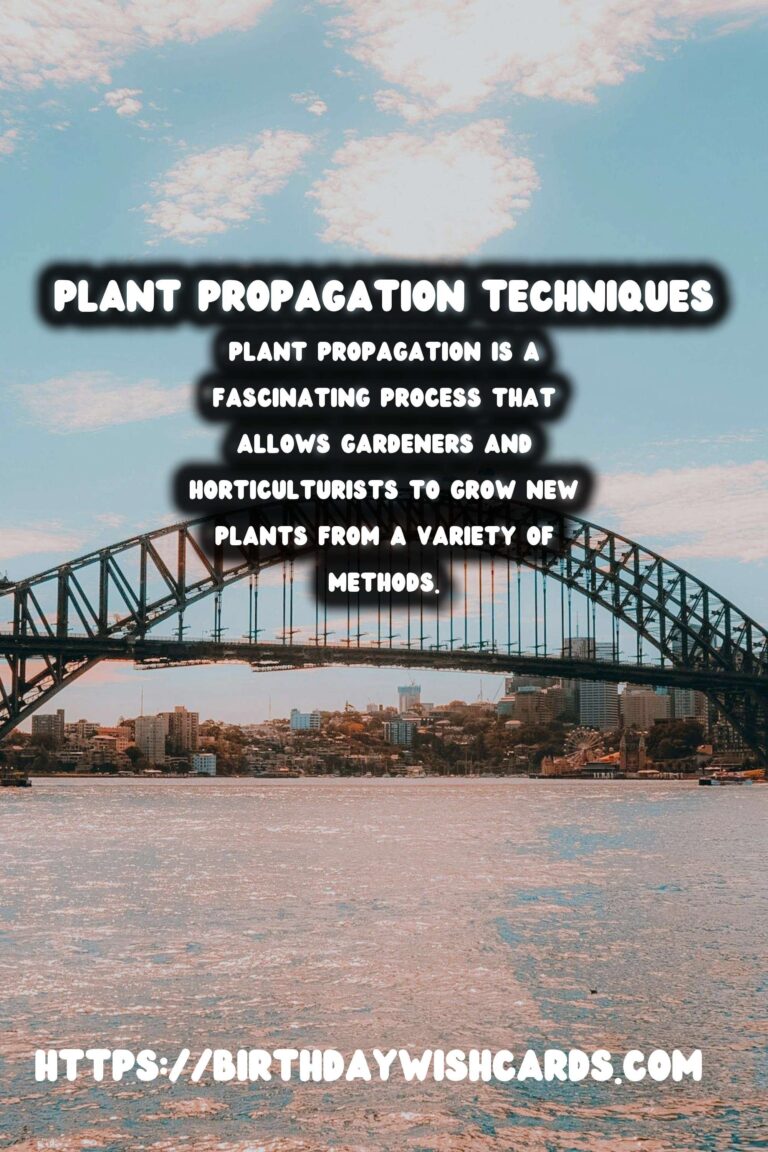
Plant propagation is a fascinating process that allows gardeners and horticulturists to grow new plants from a variety of methods. These methods mainly include propagation by seeds and by cuttings, each offering unique benefits and challenges.
The Basics of Plant Propagation
Plant propagation can be defined as the process of creating new plants from a parent plant. This technique is essential in gardening and agriculture for generating large numbers of plants. It can be achieved using seeds or cuttings.
Propagation by Seeds
Seeds are the most natural form of propagation. Most plants evolve to reproduce through seeds, ensuring genetic diversity and adaptability. Here are the key steps involved in this method:
- Collection: Seeds are collected from mature plants. It is critical to ensure seeds are collected at the right time to enhance germination rates.
- Preparation: Depending on the plant species, seeds may need to be soaked or scarified to break dormancy and enhance germination.
- Sowing: Seeds are sown in the right medium and environmental conditions, which will depend on whether they thrive in full sun or shade.
- Germination: Once the seeds germinate, they need proper care including adequate sunlight, watering, and nutrients.
Propagation by Cuttings
Cuttings are another popular and often quicker method of propagation that involves using parts of a plant, typically stem or leaf, to grow a new plant. Here’s how it works:
- Selection: Healthy, non-flowering stems are selected to take cuttings.
- Preparation: Cuttings are usually dipped in rooting hormone to stimulate root growth.
- Rooting medium: Cuttings are placed in a suitable rooting medium, such as sand or a mixture of peat and perlite.
- Care: Keeping the cuttings in a humid environment can improve success rates, often achieved with plastic covers or misting systems.
Advantages and Limitations
Seeds: While seeds are cost-effective and natural, they take longer to develop into mature plants. They may also not breed true to type, meaning the offspring might not inherit all the parent plant’s traits.
Cuttings: Cuttings are preferred for quicker results and true-to-type propagation. However, the initial cost may be higher due to the need for rooting hormones and controlled environments.
Conclusion
Understanding different propagation techniques is crucial for effective gardening and agricultural practices. While seeds offer genetic diversity and cost-effectiveness, cuttings provide consistency and speed. Choosing the right method depends on the plant species, purpose, and available resources. Whether you’re a passionate gardener or a professional horticulturist, mastering these methods enhances your ability to maintain and expand your plant collection.
Plant propagation is a fascinating process that allows gardeners and horticulturists to grow new plants from a variety of methods. Understanding different propagation techniques is crucial for effective gardening and agricultural practices. 









#PlantPropagation #Gardening




